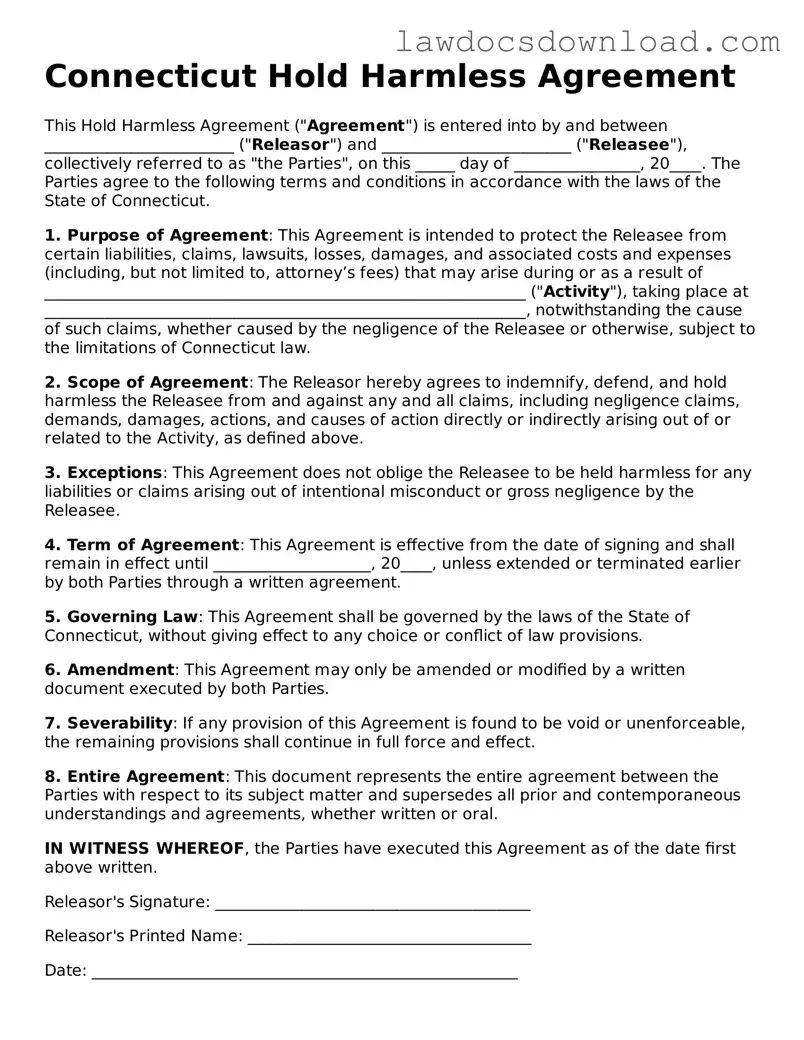Connecticut Hold Harmless Agreement
This Hold Harmless Agreement ("Agreement") is entered into by and between ________________________ ("Releasor") and ________________________ ("Releasee"), collectively referred to as "the Parties", on this _____ day of ________________, 20____. The Parties agree to the following terms and conditions in accordance with the laws of the State of Connecticut.
1. Purpose of Agreement: This Agreement is intended to protect the Releasee from certain liabilities, claims, lawsuits, losses, damages, and associated costs and expenses (including, but not limited to, attorney’s fees) that may arise during or as a result of _____________________________________________________________ ("Activity"), taking place at _____________________________________________________________, notwithstanding the cause of such claims, whether caused by the negligence of the Releasee or otherwise, subject to the limitations of Connecticut law.
2. Scope of Agreement: The Releasor hereby agrees to indemnify, defend, and hold harmless the Releasee from and against any and all claims, including negligence claims, demands, damages, actions, and causes of action directly or indirectly arising out of or related to the Activity, as defined above.
3. Exceptions: This Agreement does not oblige the Releasee to be held harmless for any liabilities or claims arising out of intentional misconduct or gross negligence by the Releasee.
4. Term of Agreement: This Agreement is effective from the date of signing and shall remain in effect until ____________________, 20____, unless extended or terminated earlier by both Parties through a written agreement.
5. Governing Law: This Agreement shall be governed by the laws of the State of Connecticut, without giving effect to any choice or conflict of law provisions.
6. Amendment: This Agreement may only be amended or modified by a written document executed by both Parties.
7. Severability: If any provision of this Agreement is found to be void or unenforceable, the remaining provisions shall continue in full force and effect.
8. Entire Agreement: This document represents the entire agreement between the Parties with respect to its subject matter and supersedes all prior and contemporaneous understandings and agreements, whether written or oral.
IN WITNESS WHEREOF, the Parties have executed this Agreement as of the date first above written.
Releasor's Signature: ________________________________________
Releasor's Printed Name: ____________________________________
Date: ______________________________________________________
Releasee's Signature: ________________________________________
Releasee's Printed Name: ____________________________________
Date: ______________________________________________________
